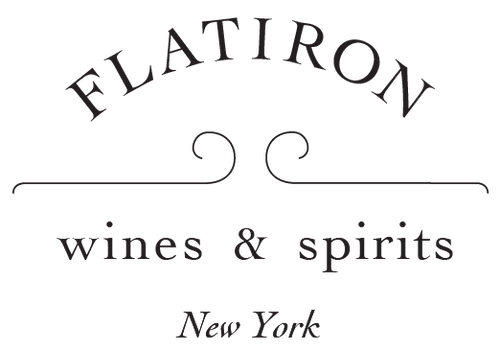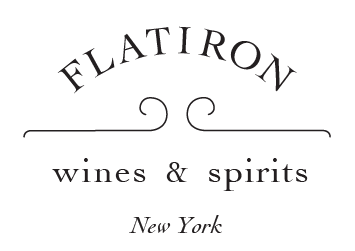What’s more important: the terroir or the grape variety?
Dear Extra Brut Friends,
You’ll hear people argue this question not just about the general principle of the thing, but especially in terms of specific wines. How much does Kathy Corison’s Napa Cab taste like Napa (i.e., its terroir), and how much does it taste like really, stupidly delicious Cabernet?
We don’t think we can (and we don’t want to!) put an end to the debate. But we do think we have two Champagnes for you this month that go to show that, where the best wines are concerned, it’s often a false dichotomy. The greatest terroirs can only be fully expressed through the right grape.
Both these Champagnes are great wines. They’re both single varietal, and they taste it. But they are also incredibly terroir-expressive. We hope you find as much pleasure as we have in trying to untangle what is the soil, what is grape and, of course, what is the winemaking.
Cheers,
Your Friends at Flatiron Wines
P.S. Have a question or comment you'd like to share?
Our thoughts on this selection
If you’ve been to The French Laundry lately (dare to dream!) and asked for a glass of Champagne to kick off the evening, your choices would be something super-duper famous (Krug, Dom Perignon, Egly Ouriet), or Dieboldt-Vallois’ Blanc de Blancs Extra Brut Cuvee Prestige.
Now, we like Krug as much as anyone, but if you chose the Dieboldt-Vallois you could apply the $95 savings to the caviar supplement and still have a little something left over to tip the babysitter.
And that’s not the only reason it would be a good choice. The Deiboldt Valois is the only Blanc de Blancs of that group – a wine made entirely from Chardonnay – and it has the brightness and lightness, especially with the relatively low 4 g/L of dosage, to be a perfect aperitif. It’s the kind of Champagne that will refresh and get you ready for the meal ahead.
But it’s on the French Laundry’s by the glass list so you might guess there’s more to it than that. And there is! The Prestige isn’t just any old Chardonnay; it’s Chardonnay grown in Cramant, Chouilly and Le Mesnil sur Oger, arguably the three most prestigious villages in all of Champagne. What makes their terroir so special is, most of all, one thing: the chalk.
The chalky soils in the Côtes des Blanc are often said to make for racy wines, with both the depth of fruit and the structure to age. Nobody knows for sure how the soils do it, but there are lots of theories. The chalk’s high calcium content may give the final wine the bracing acidity, while its white color reflects sunlight and helps with ripening, contributing to the depth of flavor.
Most of all though, these soils, especially towards the southern end of the Cote des Blancs, give the wine a special salinity, a savory minerality, that doesn’t just add complexity and give definition to every other flavor in the wine, it also does amazing things to every food it comes into contact with.
And this is what makes it such a special option for a meal like French Laundry: while it’s a delicious opener, a pleasure to drink on its own, it also has what it takes to pair with almost anything on the menu. So if you love it there’s just no reason to move on to something else.
Of course, if you’re drinking it at home and have the other bottle from this month’s Extra Brut, you should save a little bit to taste the two side by side.
Our thoughts on this selection
The most obvious difference between the Dieboldt Vallois and the Pierre Brocard is certainly the grape variety: Brocard’s 100% Pinot Noir is about as far from D-V’s 100% Chardonnay as you can get. But that’s neither where the differences begin, nor where they end.
The difference in grape isn’t arbitrary or even stylistic. The choice of grape follows almost inevitably from the soils. The Cote des Blancs’ chalky soils have been known for centuries to be propitious for Chardonnay, which when it’s properly farmed is the (only?) perfect vehicle for transmuting that chalk into wine.
Brocard’s terroir is also about as far from D-V’s as you can get, both literally and figuratively. Brocard is in the Aube, at the very south-eastern end of Champagne, closer to Burgundy than to Reims, the capital of Champagne. It’s a little warmer here than in the rest of Champagne, and grapes, especially Pinot Noir, can get just a touch riper. The soils reflect that proximity to Burgundy, too. No chalk here, just a mix of Chablis-style Kimmerdigian and Petit Chablis-style Portandian clay-limestone.
Historically the Champenois have taken advantage of those differences by planting lots of Pinot Noir, including most of the Pinot that was vinified red to make rosé Champagnes. And there’s a wisdom to that. The clay gives the Pinot a roundness and a depth that, together with the extra touch of ripeness, complements the minerality and high tones that might otherwise dominate.
But the Aube has always been a bit of an outsider inside Champagne. Land has been cheaper and the sites less prestigious. All of which helped make it a hotbed of the cutting edge of Grower Champagnes, the region where young vigneron felt able to take on risks like farming organically, using natural yeast fermentations, and minimizing sulfur and other inputs.
Thibaud Brocard, the fifth generation at the grower, is deeply committed to all those moves. He converted to organic farming over a decade ago, uses spontaneous fermentations, and minimal sulfur. The wine has no dosage at all. This is how Thibaud has found both the variety and the terroir can best express themselves. This is winemaking at the service not of style or philosophy, but of grape, terroir and, ultimately, wine. The result is an intense but complete, focused but complex Champagne.
And what of that last sip of Deiboldt-Vallois you’ve been saving to taste side by side with the Pinot Noir: Just how different are they? After all, they are both beautiful examples of Champagne, with all the charms that implies. But to us they are also very different. The D-V carries itself with the almost aristocratic bearing of a classic Champagne. The Brocard, while elegant, is also more cutting.
We also see this in the history of reviews of the wines. We haven’t and we won’t make our Extra Brut selections based on reviews in the press. It is interesting, though, to see the difference. Dieboldt-Vallois has been featured in magazines, guides and papers, here and in Europe, for decades: wine after wine, vintage after vintage. We only found, on the other hand, one review of the 2015 Brocard. But what a review! Wine & Spirits Magazine rated it their best Champagne in 2023.
YOU MAY ALSO LIKE
A guide to the best bubbles in the world and what makes them different from the Grandes Marques
Champagne is the world’s most famous sparkling wine. Hailing from the Champagne regions of France, its biggest names are among the biggest names in wine: Moet, Dom Perignon, Veuve Clicquot, Cristal.
But there’s another side to Champagne: a universe of small-scale producers preserving ancient family farming traditions and bottling wines you’ve never heard of.
These are the Grower Champagnes.
We're here to help
Have a burning question or just want to connect with our team of fellow Champagne lovers?









![Agrapart et Fils, Experience Blanc de Blancs Brut Nature Grand Cru, NV [2019]](http://nyc.flatiron-wines.com/cdn/shop/files/Agrapart-et-Fils-Experience-Blanc-de-Blancs-Brut-Nature-Grand-Cru-NV-2019-Sparkling-Wine-Flatiron-Wines-Spirits-New-York_{width}x.jpg?v=1747060791)





